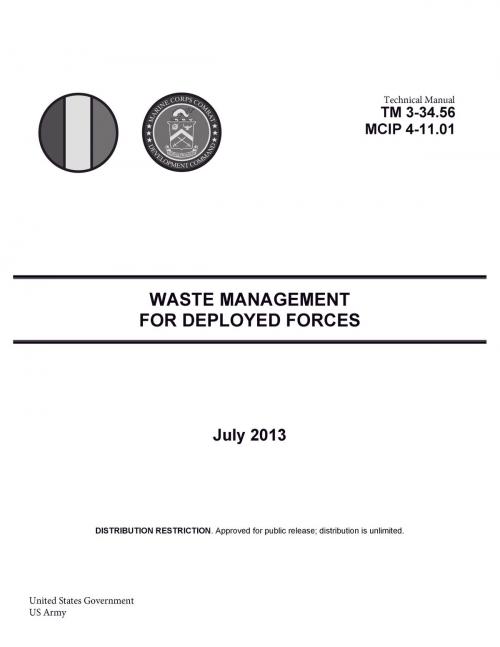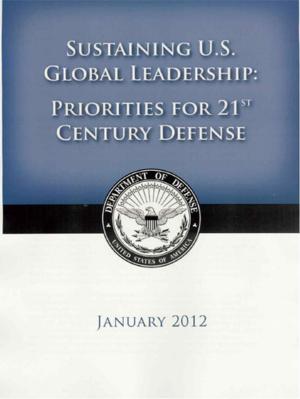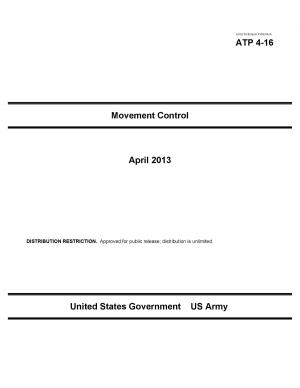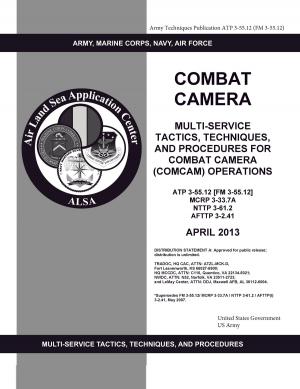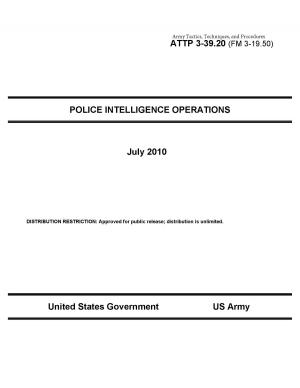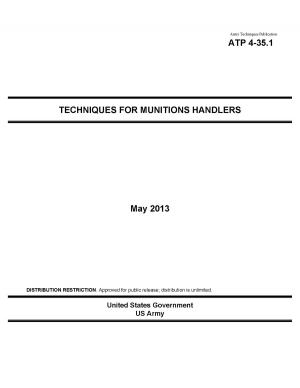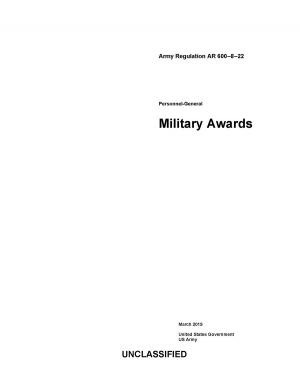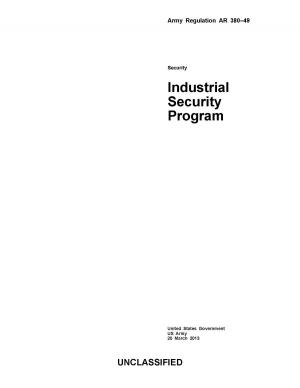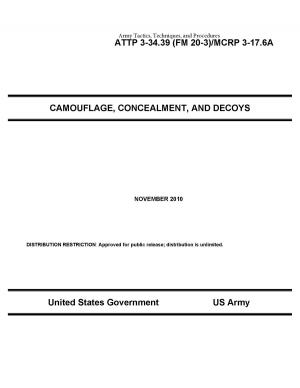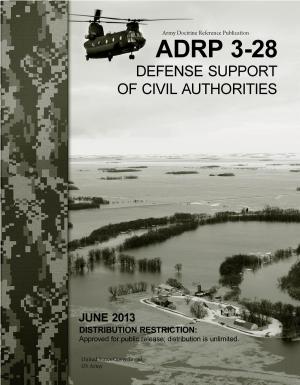Technical Manual TM 3-34.56 MCIP 4-11.01 Waste Management for Deployed Forces July 2013
Nonfiction, Science & Nature, Science, Other Sciences, Reference| Author: | United States Government US Army | ISBN: | 1230000175058 |
| Publisher: | eBook Publishing Team | Publication: | September 7, 2013 |
| Imprint: | Language: | English |
| Author: | United States Government US Army |
| ISBN: | 1230000175058 |
| Publisher: | eBook Publishing Team |
| Publication: | September 7, 2013 |
| Imprint: | |
| Language: | English |
Waste Management for Deployed Forces provides guidance on conducting waste management operations while deployed and focuses on brigade level and below. It provides a better understanding of the waste streams generated during operations and provides guidance on minimizing the harmful effects of waste on human health, the environment, and the mission. It describes the planning necessary to estimate generated waste, based on unit functions and activities and provides guidance on generating and implementing waste management solutions to fulfill immediate and long-term requirements. While aimed at engineers, logisticians, transporters, environmental officers, preventive medicine (PVNTMED) personnel, and others who are primarily involved in waste management, it will enlighten commanders and staffs regarding the need to consider the waste generated during each phase of the operation and the importance of incorporating waste management during planning. This manual is a compilation of techniques and procedures found in doctrine, lessons learned, and other reference material; it also serves as a “how to” guide for performing waste management at the tactical level. Because each situation will be uniquely different, based on operational and mission variables, this manual relies on the reader’s ability to apply experience, common sense, and good judgment in generating options and implementing solutions that will reduce the harmful effects of waste on human health and the environment to the fullest extent possible. This manual is best used in combination with the subject matter expertise that resides within, or is available through, higher headquarters, supporting units, or reachback. A key reference and keystone document for this manual is Environmental Considerations.
Recent experiences in Iraq and Afghanistan have demonstrated some of the consequences when waste generation is not considered early in the planning phase or when it is not responded to effectively. This includes health concerns associated with trash burning and the negative impacts (in terms of time and money) on base camp transfers and closures due to residual environmental impacts. The challenges associated with generated waste will continue to confront U.S. forces in the future. Future operational environments will likely be complex and austere. Local or HN municipal waste disposal or treatment facilities or services may be nonexistent, incapacitated, or beyond reach due to their proximity, security, or political considerations—placing the burden for waste management on the deployed force. Commanders (supported by their staffs) must consider the various operational impacts of waste generation early in the planning phase and throughout each phase of the operation.
Waste management operations involve the reduction, segregation, collection, transportation, processing (treatment), and disposal of waste materials. Waste management is performed to ensure a healthy and sanitary environment, preserve the natural environment, maintain positive relationships with the HN, and sustain mission readiness on many levels. Waste management operations are primarily general engineering tasks aligned with the sustainment warfighting function. Although engineers have staff proponency for waste management operations, they rely on the contributions of many others (such as environmental officers, transporters, logisticians, and PVNTMED personnel) who serve as part of the waste management planning group.
This manual is organized as follows:
Chapter 1, Waste Management for Deployed Forces.
Chapter 2, Integrating Waste Management.
Chapter 3, Nonhazardous Solid Waste.
Chapter 4, Wastewater.
Chapter 5, Hazardous and Special Waste.
Chapter 6, Medical Waste.
Appendix A, Waste Streams.
Appendix B, Example Waste Management Appendix.
Appendix C, Spill Planning, Response, and Reporting.
Appendix D, Reachback Points of Contact.
Appendix E, Material Safety Data Sheets.
Appendix F, Emerging Technologies
Waste Management for Deployed Forces provides guidance on conducting waste management operations while deployed and focuses on brigade level and below. It provides a better understanding of the waste streams generated during operations and provides guidance on minimizing the harmful effects of waste on human health, the environment, and the mission. It describes the planning necessary to estimate generated waste, based on unit functions and activities and provides guidance on generating and implementing waste management solutions to fulfill immediate and long-term requirements. While aimed at engineers, logisticians, transporters, environmental officers, preventive medicine (PVNTMED) personnel, and others who are primarily involved in waste management, it will enlighten commanders and staffs regarding the need to consider the waste generated during each phase of the operation and the importance of incorporating waste management during planning. This manual is a compilation of techniques and procedures found in doctrine, lessons learned, and other reference material; it also serves as a “how to” guide for performing waste management at the tactical level. Because each situation will be uniquely different, based on operational and mission variables, this manual relies on the reader’s ability to apply experience, common sense, and good judgment in generating options and implementing solutions that will reduce the harmful effects of waste on human health and the environment to the fullest extent possible. This manual is best used in combination with the subject matter expertise that resides within, or is available through, higher headquarters, supporting units, or reachback. A key reference and keystone document for this manual is Environmental Considerations.
Recent experiences in Iraq and Afghanistan have demonstrated some of the consequences when waste generation is not considered early in the planning phase or when it is not responded to effectively. This includes health concerns associated with trash burning and the negative impacts (in terms of time and money) on base camp transfers and closures due to residual environmental impacts. The challenges associated with generated waste will continue to confront U.S. forces in the future. Future operational environments will likely be complex and austere. Local or HN municipal waste disposal or treatment facilities or services may be nonexistent, incapacitated, or beyond reach due to their proximity, security, or political considerations—placing the burden for waste management on the deployed force. Commanders (supported by their staffs) must consider the various operational impacts of waste generation early in the planning phase and throughout each phase of the operation.
Waste management operations involve the reduction, segregation, collection, transportation, processing (treatment), and disposal of waste materials. Waste management is performed to ensure a healthy and sanitary environment, preserve the natural environment, maintain positive relationships with the HN, and sustain mission readiness on many levels. Waste management operations are primarily general engineering tasks aligned with the sustainment warfighting function. Although engineers have staff proponency for waste management operations, they rely on the contributions of many others (such as environmental officers, transporters, logisticians, and PVNTMED personnel) who serve as part of the waste management planning group.
This manual is organized as follows:
Chapter 1, Waste Management for Deployed Forces.
Chapter 2, Integrating Waste Management.
Chapter 3, Nonhazardous Solid Waste.
Chapter 4, Wastewater.
Chapter 5, Hazardous and Special Waste.
Chapter 6, Medical Waste.
Appendix A, Waste Streams.
Appendix B, Example Waste Management Appendix.
Appendix C, Spill Planning, Response, and Reporting.
Appendix D, Reachback Points of Contact.
Appendix E, Material Safety Data Sheets.
Appendix F, Emerging Technologies
